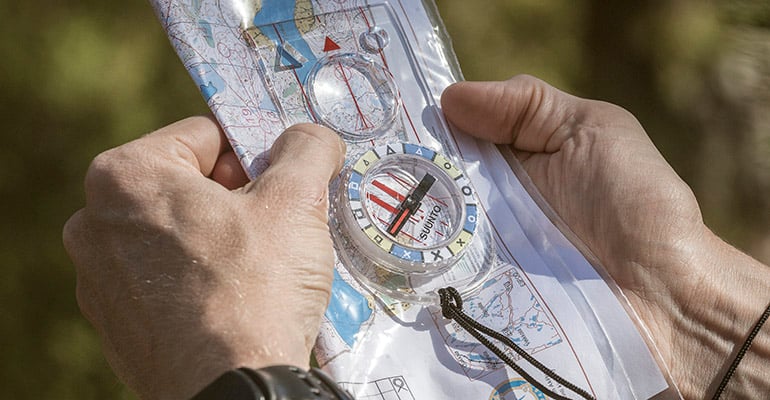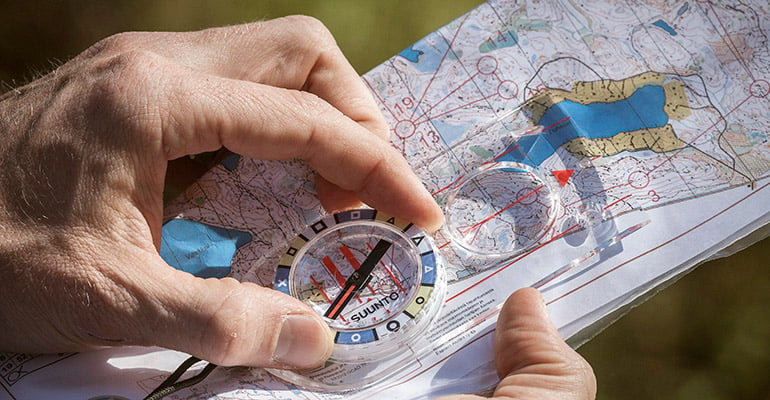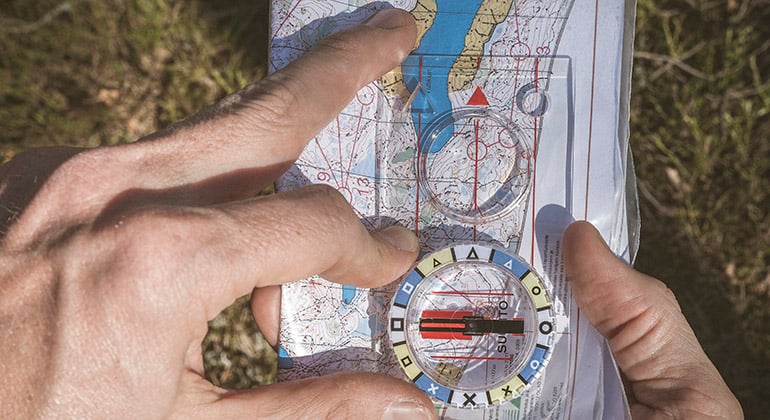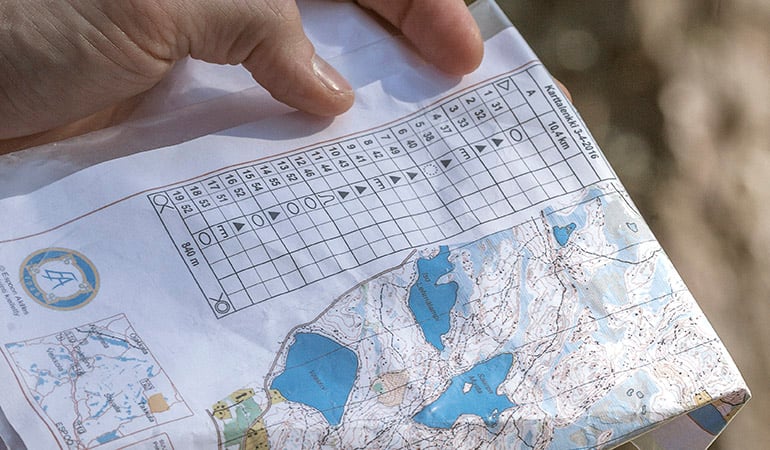What equipment is needed to start orienteering?
A map, a compass and sturdy shoes are the basic requirements.
What’s the scale of an orienteering map usually?
Maps are of scales 1:10000 or 1:15000, larger scales in urban events. That means that on the regular 1:10000 map 1 cm in the map depicts 100 m in the terrain.
What advice can you give on the map symbols?
Maps are drawn with same symbols worldwide and the colors on the map roughly resemble those you see in real life in front of you. Blue stands for water, white for normal forest, green for thick forest, black mostly for built objects and yellow depicts open areas. However, brown representing elevation contours is the most important color for navigation.
How is an orienteering course presented on a map?
Start from the purple triangle and follow the connecting lines to the numbered control circles. When you have reached the double circle you can stop running – you have reached the finish!
How to hold a map?
Fold the map so that you can point your thumb to your last known position. Make sure you can see the whole distance towards your next control.
How to orient a map?
Always keep the map oriented according to your direction of travel. This way you'll see the upcoming objects in the terrain as you move along your thumb on the map as you go.
How to decide the best route to the next control point?
Pick a route where you'll come across clear objects along the way all the way until the next control. It usually pays off to have a good plan and pick a route to suite ones navigational skills. Shortest is not always the safest way to find the control quickly...
How to get the direction to the next control with a map and a compass?

Place the compass' direction of travel line parallel to the control connecting line on your map. In the image above the line connects the start (marked with a triangle) with the first control (marked with a circle).

Rotate the compass capsule so that the red orienting lines are aligned with the map meridians and pointing north.

Keep the map horizontal while you turn yourself so that the compass north arrow and the map meridians pointing to the north line up. Now the line of travel points towards your next control!
How to keep your direction?
After getting the correct direction using the compass you should look up into the terrain and pick a distinguishable feature far ahead to aim for. Repeat glimpse at your compass often to make sure the map's meridians and your compass north arrow line up – and pick new features in the terrain to aim for.
How do you know you are at the right control?

Control description define the exact location of the control (e.g. on the northeast side of the southernmost boulder in the control circle). Code numbers found in the control descriptions reassure you're at the correct control.
Bonus: How to run fast in the forest?
Keeping your gaze constantly about 20 m in front of you making micro-routechoices through the terrain will help you smoothly glide across boulder fields and swamps alike. Orienteers develop a seventh sense to run fast through all kinds of environments while reading the map only through extensive training, so get out there!
Learn more about Suunto compasses
Meet the orienteer who runs a 2h 18m marathon
Find your local orienteering organization through the International Orienteering Federation